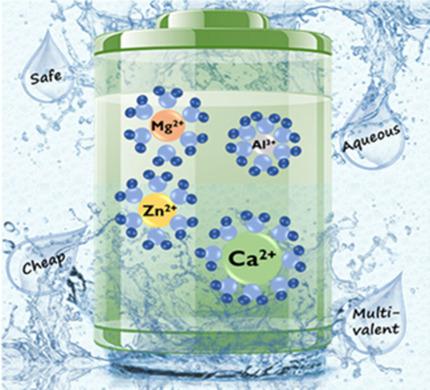当前位置:
X-MOL 学术
›
ChemSusChem
›
论文详情
Our official English website, www.x-mol.net, welcomes your feedback! (Note: you will need to create a separate account there.)
Water in Rechargeable Multivalent‐Ion Batteries: An Electrochemical Pandora's Box
ChemSusChem ( IF 8.4 ) Pub Date : 2019-01-07 , DOI: 10.1002/cssc.201801523 William Manalastas 1 , Sonal Kumar 1 , Vivek Verma 1 , Liping Zhang 2 , Du Yuan 2 , Madhavi Srinivasan 1, 2
ChemSusChem ( IF 8.4 ) Pub Date : 2019-01-07 , DOI: 10.1002/cssc.201801523 William Manalastas 1 , Sonal Kumar 1 , Vivek Verma 1 , Liping Zhang 2 , Du Yuan 2 , Madhavi Srinivasan 1, 2
Affiliation

|
Multivalent‐ion batteries built on water‐based electrolytes represent energy storage at suitable price points, competitive performance, and enhanced safety. However, to comply with modern energy‐density requirements, the battery must be reversible within an operating voltage window greater than 1.23 V or the electrochemical stability limits of free water. Taking advantage of its powerful solvation and catalytic activities, adding water to electrolyte preparations can unlock a wider gamut of liquid mixtures compared with strictly nonaqueous systems. However, a point‐by‐point sweep of all potential formulations is arduous and ineffective without some form of systematic rationalization. The present Review consolidates recent progress, pitfalls, limits, and insights critical to expediting aqueous electrolyte designs to boost multivalent‐ion battery outputs.
中文翻译:

可充电多价离子电池中的水:电化学潘多拉魔盒
基于水基电解质的多价离子电池以适当的价位,具有竞争力的性能和增强的安全性代表了能量存储。但是,为了符合现代的能量密度要求,电池必须在大于1.23 V的工作电压窗口或游离水的电化学稳定性极限内是可逆的。与严格的非水体系相比,利用其强大的溶剂化和催化活性,将水添加到电解质制剂中可以释放出更大范围的液体混合物。但是,如果不进行某种形式的系统合理化,所有潜在公式的逐点扫描是艰巨而无效的。本次审查总结了最近的进展,陷阱,限制,
更新日期:2019-01-07
中文翻译:

可充电多价离子电池中的水:电化学潘多拉魔盒
基于水基电解质的多价离子电池以适当的价位,具有竞争力的性能和增强的安全性代表了能量存储。但是,为了符合现代的能量密度要求,电池必须在大于1.23 V的工作电压窗口或游离水的电化学稳定性极限内是可逆的。与严格的非水体系相比,利用其强大的溶剂化和催化活性,将水添加到电解质制剂中可以释放出更大范围的液体混合物。但是,如果不进行某种形式的系统合理化,所有潜在公式的逐点扫描是艰巨而无效的。本次审查总结了最近的进展,陷阱,限制,



























 京公网安备 11010802027423号
京公网安备 11010802027423号